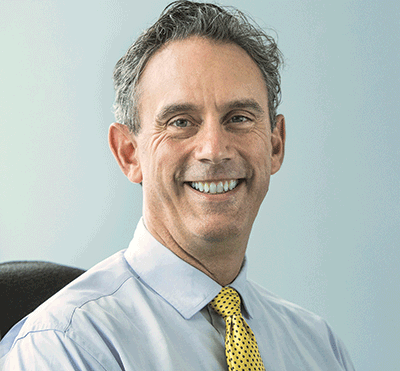2019 CEOs Who "Get It"


Brian DiSabatino
CEO
EDiS Co.
Wilmington, DE
For 110 years and five generations of ownership, EDiS Co. has been building what matters in our community. EDiS provides construction management, general construction, design-build, interiors, pre-engineered solutions and BIM services on projects large and small. The company has 80 workers.
Describe your personal journey to becoming a CEO who “gets it.” What experiences or lessons brought you to where you are today?
I have been part of our construction business my entire life. I’ve had the privilege of knowing five generations of tradespeople who have built our community. The common denominator that I learned from them is respect for the person, every person. And when you place that philosophy on a construction site, you quickly learn that getting people home at night in the same or better condition than they arrived is the priority that drives all other decisions. People matter.
Why is safety a core value at your organization?
Being a company that originated from immigrant roots, you quickly learn that the livelihood that comes from our trade is central to our families. It puts food on the table, it creates educational futures for our children, and it provides for our health and welfare during retirement. Therefore, protecting and enhancing the ability of our work family to come back to work in the morning, every morning, is central to our and their well-being.
What is the biggest obstacle to safety at your organization, and how do you work to overcome it?
There is a lot of “noise” in our business. Schedules, budgets, cranky moods, egos are all examples of “noise” that arrives at a jobsite each day. Our job is to instill safety as a subconscious thought for every decision, allowing us to compete with this noise. But we also recognize the need to constantly create conscious thought through discussion, training and audits.
How do you instill a sense of safety in employees on an ongoing basis?
Two ways. First, we establish the expectation of safety by making sure that this isn’t a cliché thought, but rather a commitment from the owners of the company and me, the CEO. We expect safe environments. Second, we provide employees with training, ongoing feedback and job security so that they are empowered to make split-second decisions that benefit the welfare of those around them and themselves.
How does your organization measure safety? What are the leading indicators that show you how safe your organization is, and where do you see room for improvement?
We measure formal statistics such as our lost time and incident rates. And certainly, we look to our insurance and [experience modification] rates. But we don’t use them exclusively. It sounds simplistic, but we measure safety by asking, every day, if everyone went home unharmed and if there were any near misses. We also measure it by constantly evaluating the attitudinal commitment to the topic. In this day and age of accumulating data, I would suggest that we have room for improvement by better studying industry loss rates and causation factors, and bringing those to life in our training.
What role does off-the-job safety play in your organization’s overall safety program? What types of off-the-job safety and health programs does your organization offer to employees?
At EDiS, we believe that health and wellness need to be looked at holistically, both in and out of the office and jobsite. To that end, EDiS extends our health and safety program past work hours, and addresses employee wellness both on the job and off.
Some recent examples of employee safety and health programs targeted to off-the-job safety:
- Flu shots
- Medical surveillance through bloodwork
- Winter safety tips
- Summer safety tips
- Holiday safety tips
- Fire extinguisher training
- CPR and first aid training
- Biometric screening/wellness awareness
Post a comment to this article
Safety+Health welcomes comments that promote respectful dialogue. Please stay on topic. Comments that contain personal attacks, profanity or abusive language – or those aggressively promoting products or services – will be removed. We reserve the right to determine which comments violate our comment policy. (Anonymous comments are welcome; merely skip the “name” field in the comment box. An email address is required but will not be included with your comment.)


